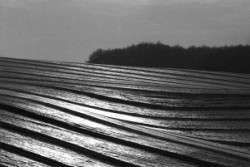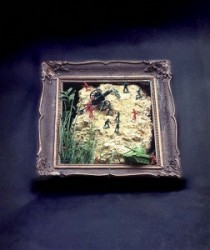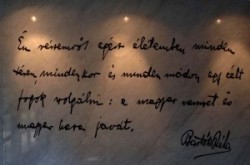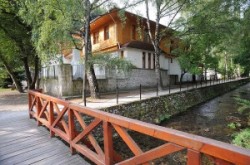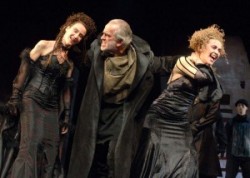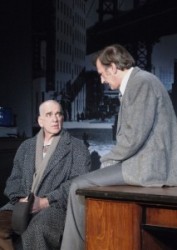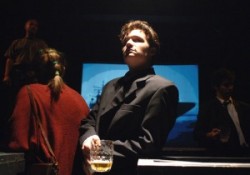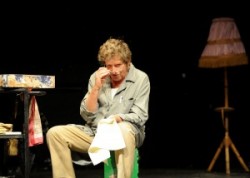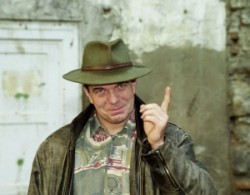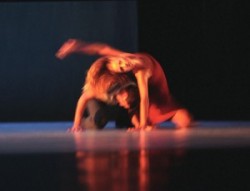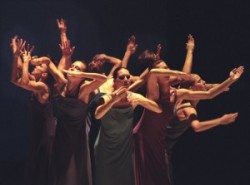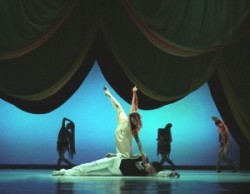GALLERIES
|
ART PHOTOGRAPHY
I consider my way of seeing things to have been originated at the end of the 1960s, beginning of the 1970s. In those years I wandered throughout the country with my friends, often also by myself and later as a musician. It was maybe the impressions gathered during those years that helped the formation of my visual world. I think I have always been a contemplative type. Living near the City Park (VÃĄrosliget) I watched passers-by and lonely people sitting on the benches at dawn or dusk. Of what I had not been aware at that time, my photos already revealed, namely, that deeper connections hide beyond the snapped moment, that things more often than not are not what they seem and the moment caught in the picture is but a code for the viewer.
|
|
|
|
|
|
|
|
|
|
|
|
|
|
|
|
|
|

|
Nana
|
Nagy AndrÃĄs, Emile Zola: Nana |
|
|
|
|
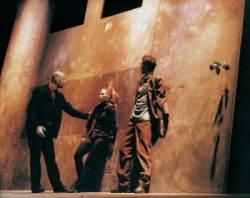
|
Splinters
|
TamÃĄs Juranics: Splinters
Stage-design and costumes: Zsuzsa MolnÃĄr
Splinters, bits and pieces and fragments. Fragments of destinies, loves and lives that so often determine the whole, at times our whole life. A night, when the unreal plays a real role, thus enhances the chance for accidental occurrences. I do not wish to speculate on the big questions of life, nor to draw a lesson at the end of the show; my intention is to simply highlight the bits and pieces of human destinies, true and false loves, desires, every-day Mandarins, disappointments, broken hearts â splinters. TamÃĄs Juranics.
|
|
|

|
The Miraculous Mandarin
|
âThree apaches at their den force a young girl to stand by the window and attract passing men into the room, men who will later be brutally robbed by them. There are three seduction scenes. The first man to be lured up is a penniless old man. The second is none better. However, the third man is a rich Chinese. The catch is good, the girl tries to dilute him with her dance and the Mandarinâs zest for the girl is aroused, he falls passionately in love with the prostitute. The apaches grab and rob him, stab him with a sword, smother and strangle him, but without avail: the Mandarin in love remains fixated on the girl. To save the situation, by a womanly instinct, the prostitute agrees to fulfill the Mandarinâs desire: The Mandarin and the prostitute embrace passionately and with his longing fulfilled, he dies in an ecstasy of love.â |
|
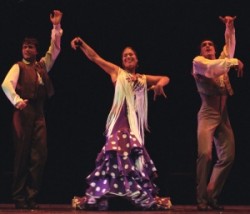
|
Antonio MÃĄrquez Compani
|
Antonio MÃĄrquez: Reencuentros, Movimiento Flamenco
The Antonio MÃĄrquez Dance Company
MÃĄrquez had learnt the basics of his dancing skills first at the school of the Spanish National Ballet, later with renowned Spanish masters. He rose to fame in his country with his leading roles in ballets, and his unique, soaring dancing style soon paved his way to an international career. His buoyant, passionate dance and his distinct choreographies make his performances unforgettable.
MÃĄrquezâs Dance Company made its debut on 7 November 1995, in Seville, at the Teatro de la Maestranza, staging the show âMovimiento Perpetuoâ. In 1997 they won the Award Nureyev; a year later they were granted the Italian âTaranto Award for Best Entertainmentâ and the Spanish âAward for the Most Valuable Professional of the Danceâ. As a consequence of their brilliant performance at the 50th Havana Festival, their name got inscribed in the Golden Book of the History of the Cuba Balletâ. From 1999 on, the Company has been touring the stages of the World, e.g. the Monte-Carlo Opera, Madrid, Athens, and Japan, Brazil and France and Hungary.
|
|
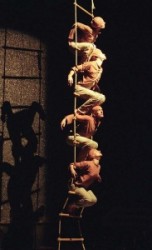
|
Tricks and Tracks
|
Tricks & Tracks: PÃĄl FrenÃĄk was born in Budapest, in 1957, and settled down in Paris in 1983. He established his own Dance Company in 1989, and made his first choreography in France the same year, titled âTerâ. In the following years, mainly staging improvisational pieces, he worked with GyÃķrgy KurtÃĄg, Patrick Schneider and several other contemporary composers. His first real hit was the Les Palets / Skate-boards; this show, just as all his other works, could be seen by the Hungarian audience as well, as part of the Budapest Autumn Festivals, or as individual performances.
Since 1998 FrenÃĄk has been working more and more in Hungary, the majority of dancers of his Company are Hungarian. The premiere of his last three shows (Out of the Cage, Tricks & Tracks and his latest, the Festen/Feast ) were held in Budapest, in the House of Contemporary Arts, the âTrafÃģâ.
|
|

|
The Kremlin Ballet
|
The Company was founded by the well-known choreographer, Andrei Petrov, in 1990. They reside in the Kremlin Palace that is located on the territory of the Kremlin in Moscow. The Company defines its artistic mission as one that is based on masterpieces of the classical legacy and their creative further development.
Their repertoire comprises the oeuvres of the outstanding old masters (M. Petipa, A. Gorski, L. Ivanov) as well as recent ballets of J. Grigorovich, V. Vasziljev, A. Petrov.
The pieces are directed by those leading stage artists, who otherwise are considered as trend-setters of the new expression formulas of the present day theater: Stanislav Benediktov and Olga Polyanskaya, Marina Sokolova and Boris Messerer, Viktor and Rafael Volski, Vladimir Arefev and Boris Krasnov.
|
|
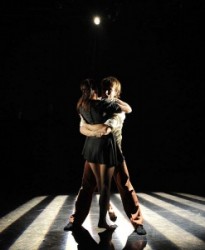
|
In memory Ilona TÃģth.
|
In memory Ilona TÃģth.
KoreogrÃĄfus, rendezÅ: Velekei LÃĄszlÃģ, Jelmez:GyÅri Gabriella, Zene: Thomas Newman, Anne Dudley, James
Newton Howard.
TÃĄncoljÃĄk: TÃģth Ilona: SÃģthy VirÃĄg( HarangozÃģ-dÃjas). GyurmÃĄnczi DiÃĄna, HorvÃĄth KrisztiÃĄn, Dobilov Alekszej, Smith Daniel Ascher, SebestyÃĐn BÃĄlint, KÃĄtay TÃģth AndrÃĄs. MÅąvÃĐszeti vezetÅ, igazgatÃģ:Kiss JÃĄnos(Kossuth-dÃjas, Liszt-, Hevesi- dÃjas balettmÅąvÃĐsz, Ãrdemes mÅąvÃĐsz. |
|
|
|
|
|
|
|
|
|


